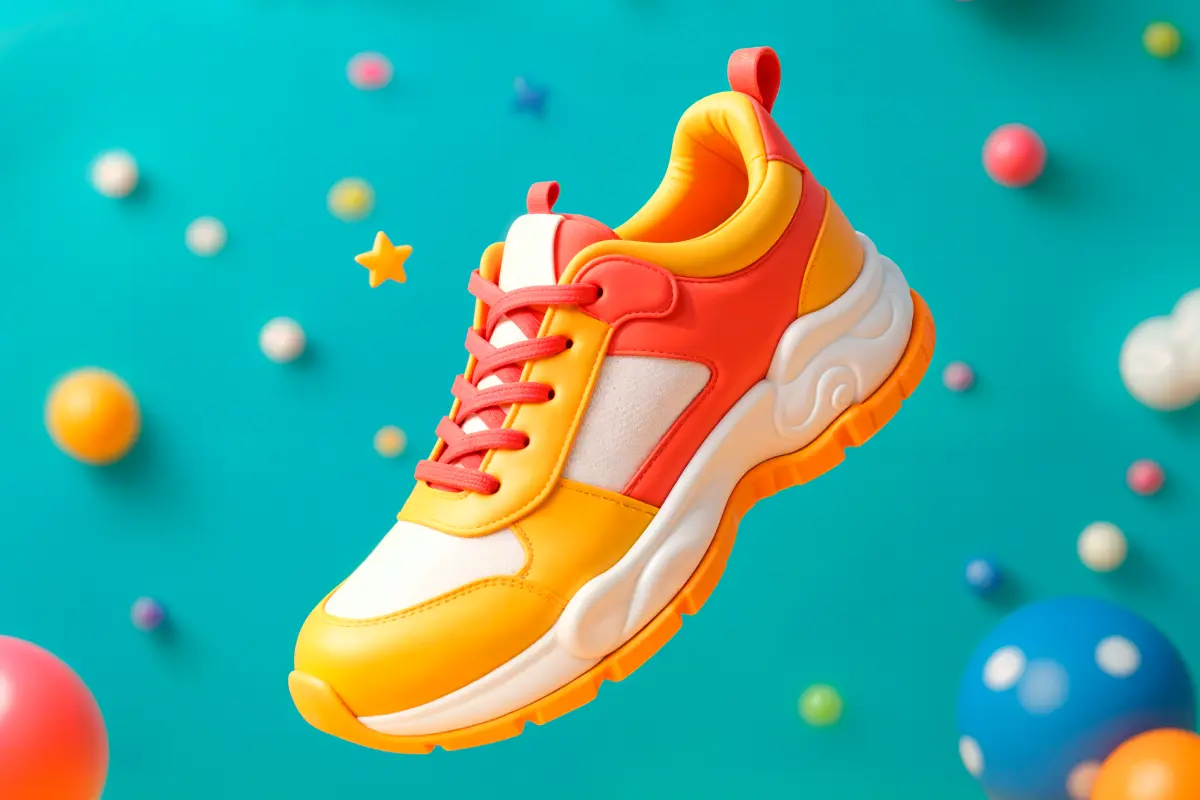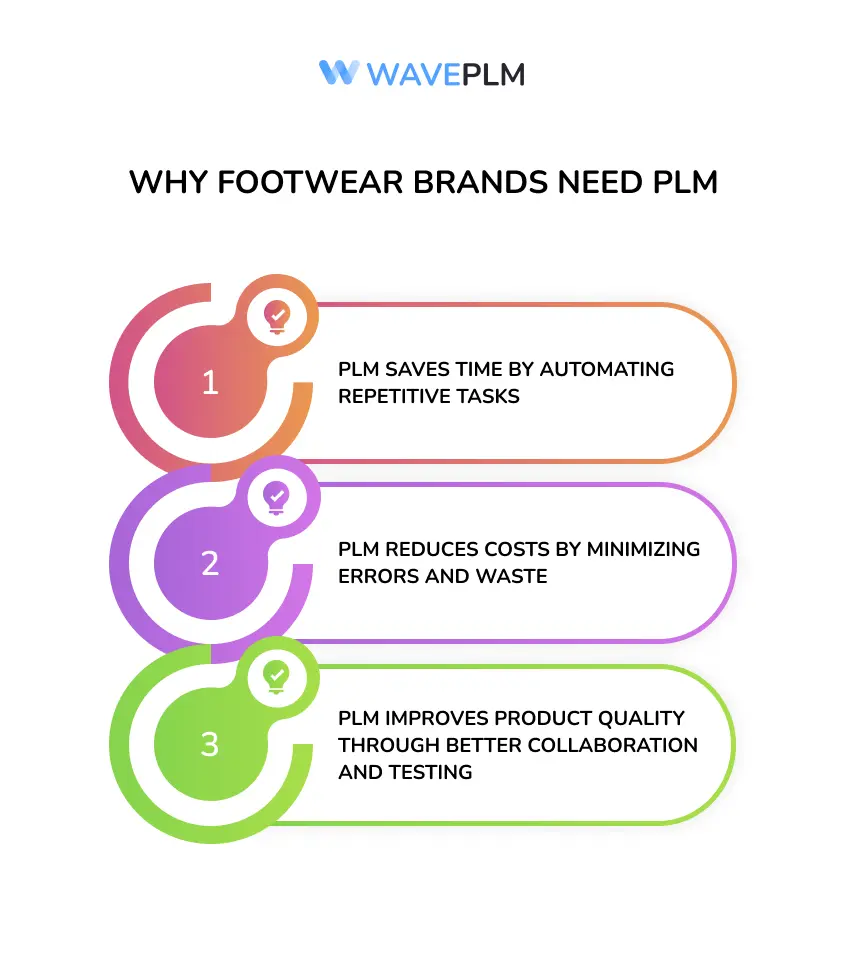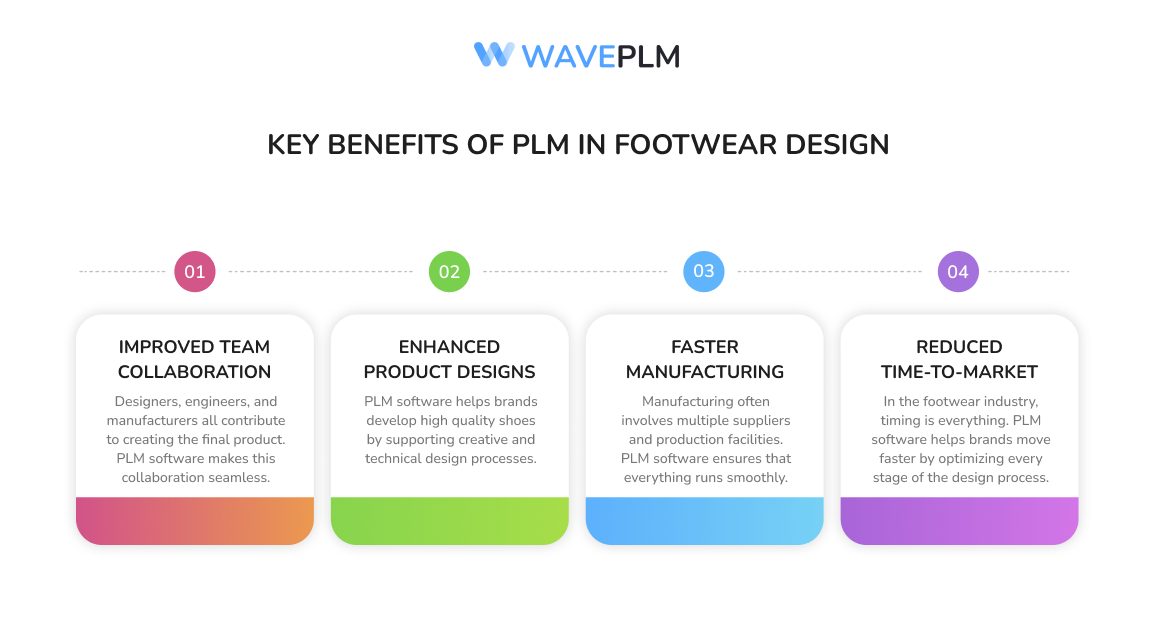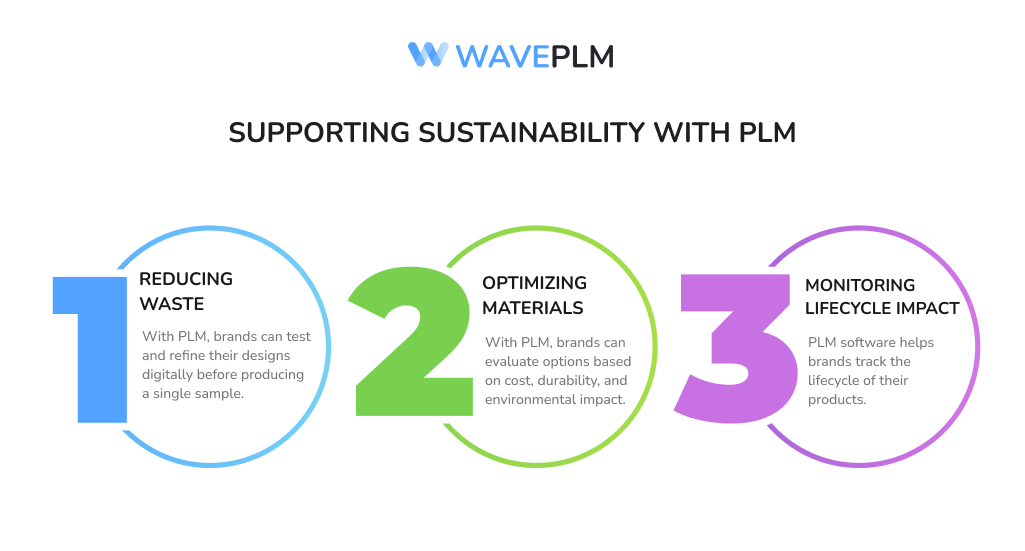
Footwear design
The footwear industry is fast-paced and highly competitive. To stay ahead, brands must deliver stylish, functional, and market-ready products quickly.
Managing this process can be challenging. It involves multiple teams, complex designs, and tight deadlines.
This is where Product Lifecycle Management (PLM) software plays a critical role. PLM systems streamline every step of footwear development, from concept to manufacturing and beyond.
This article explains how PLM software simplifies shoe design, improves efficiency, and supports innovation in the footwear industry.
Introduction to the Footwear Industry
The footwear industry is a dynamic and ever-evolving market, where footwear brands are constantly challenged to deliver innovative, stylish, and high-quality products that meet the expectations of today’s consumers. With complex production processes that span from initial design and development to large-scale manufacturing and global distribution, companies must operate efficiently to stay ahead of competitors.
To achieve this, many footwear brands are turning to PLM software as a strategic solution. PLM solutions streamline workflows, allowing teams to manage every stage of the product lifecycle on a centralized platform. This not only improves product quality but also enhances communication between designers, manufacturers, and suppliers. Effective supply chain management, powered by PLM systems, enables brands to reduce costs, optimize production processes, and deliver products to market faster. By leveraging these advanced management systems, footwear companies can improve their business operations, respond quickly to market trends, and ensure ongoing success in a highly competitive industry.
What Is PLM Software?
PLM software helps businesses manage the entire life cycle of a product, from the first idea to its final production. It acts as a centralized platform where teams can collaborate, share data, and track progress. This software ensures that everyone works with the most accurate and updated information. Cloud-based PLM modules further improve accuracy in the footwear and apparel supply chain by automating workflows and supporting integrated systems.
In footwear design, PLM systems connect designers, manufacturers, and suppliers. They improve communication, reduce errors, and speed up the process of bringing products to market.
Why Footwear Brands Need PLM
Footwear design involves many steps, such as brainstorming, sketching, prototyping, testing, and production. Without proper coordination, delays and mistakes can occur. Footwear PLM software eliminates these problems by organizing the design process and ensuring all teams work in sync.
Here are some of the main reasons why PLM is essential for footwear brands:
- It saves time by automating repetitive tasks.
- It reduces costs by minimizing errors and waste.
- It improves product quality through better collaboration and testing.
PLM solutions also help streamline workflows and automate processes, leading to improved operational efficiencies for footwear brands.

Why Footwear Brands Need PLM. Key Benefits of PLM in Footwear Design
1. Improved Team Collaboration
Designing a shoe is a team effort. Designers, engineers, and manufacturers all contribute to creating the final product. PLM software makes this collaboration seamless.
With a PLM system, everyone works from the same platform. Designers can upload 3D models, engineers can refine the specifications, and manufacturers can access clear production guidelines. This reduces miscommunication and ensures that all teams stay aligned.
For example, a designer might create a 3D design of a running shoe. Using PLM, they can share this design with the engineering team. Engineers can then adjust the design to improve its durability or comfort. Once finalized, manufacturers can use the same file to start production.
2. Enhanced Product Designs
Innovation is key in the footwear industry. Consumers want shoes that look great and perform well. PLM software helps brands achieve this by supporting creative and technical design processes.
PLM systems often include digital footwear tools for 3D design and 3D printing. These tools allow designers to create detailed models and prototypes quickly. PLM software also enables teams to efficiently manage and organize components, which are essential for developing innovative footwear designs. Teams can test different materials, colors, and styles without starting from scratch.
By using PLM software, brands can focus on creating shoes that meet real-world demands, such as comfort, durability, and sustainability. This results in improved product designs that stand out in the market.
3. Faster Manufacturing Processes
Once a design is complete, the focus shifts to manufacturing. This step often involves multiple suppliers and production facilities. PLM software ensures that everything runs smoothly.
Footwear brands can harness the capabilities of PLM systems to effectively manage their supply chains and scale their manufacturing processes.
The system provides manufacturers with detailed instructions, including material specifications, dimensions, and assembly processes. It also integrates with supply chain management tools to track inventory and delivery schedules.
For example, a PLM system can alert manufacturers if a specific material is out of stock. Teams can then adjust their plans to avoid delays. By streamlining manufacturing processes, PLM reduces production time and improves efficiency.
4. Reduced Time-to-Market
In the footwear industry, timing is everything. Trends change quickly, and brands need to release products before they lose relevance. PLM software helps brands move faster by optimizing every stage of the design process.
With PLM, teams can complete tasks like prototyping, testing, and production planning in less time. The system also provides real-time updates, so everyone knows what needs to happen next.
For instance, a team working on a seasonal collection can use PLM software to coordinate designs, finalize materials, and plan production in advance. PLM also supports managing multiple collections at once, allowing teams to create and customize different product lines efficiently. By leveraging material libraries, teams can quickly develop new collections using existing resources, streamlining the process and ensuring that products are ready for launch on schedule.

Key Benefits of PLM in Footwear Design
Implementing a PLM System
For footwear brands aiming to elevate their production processes and product quality, implementing a PLM system is a game-changer. A PLM system acts as a centralized platform where all aspects of product development—design, prototyping, manufacturing, and distribution—are managed in one place. This unified approach improves communication among teams, reduces the risk of errors, and boosts overall productivity.
With a PLM system, brands can efficiently manage and track critical product data, including specifications, materials, and costs. This ensures that every stakeholder, from designers to manufacturers, has access to accurate and up-to-date information at every stage of the workflow. The result is a more streamlined process, fewer mistakes, and higher-quality products reaching the market.
When implementing a PLM system, footwear brands should carefully assess their options. Key considerations include the system’s scalability to support business growth, ease of use for all team members, and seamless integration with existing tools and systems. By choosing the right PLM solution, brands can maximize productivity, improve communication, and ensure their teams are always working with the most accurate data.
Supporting Sustainability with PLM
Sustainability is becoming a top priority in the footwear industry. PLM solutions are designed to support both footwear and apparel brands in achieving their sustainability goals across the entire supply chain. Consumers are looking for brands that care about the environment. PLM software supports sustainable practices by helping brands reduce waste, optimize materials, and track the environmental impact of their products.
Reducing Waste
Traditional prototyping often involves creating multiple physical samples. This can lead to material waste and higher costs. PLM tools, like 3D design and virtual prototyping, eliminate this issue. Brands can test and refine their designs digitally before producing a single sample.
Optimizing Materials
PLM systems allow teams to choose the best materials for their products. Brands can evaluate options based on cost, durability, and environmental impact. For example, a brand might select recycled materials for a new sneaker line, aligning with sustainability goals.
Monitoring Lifecycle Impact
PLM software also helps brands track the lifecycle of their products. Teams can analyze data to understand how their shoes perform over time. This information can guide future decisions, such as using more durable materials or improving design features.

Supporting Sustainability with PLM
Supply Chain Management in Footwear
In the fast-paced footwear industry, effective supply chain management is essential for brands that want to reduce costs, improve delivery times, and consistently meet consumer demands. A well-optimized supply chain allows footwear brands to quickly adapt to market changes, ensuring that products are delivered on time and in the right quantities.
PLM solutions play a crucial role in this process by providing a centralized system for managing communication with suppliers and manufacturers. With a PLM system, brands can track inventory levels, monitor production processes, and coordinate with partners across the supply chain. This level of visibility helps identify and address potential risks, such as material shortages or manufacturing delays, before they impact the business.
By leveraging PLM software, footwear brands can streamline their supply chain management, improve communication, and ensure that products reach the market efficiently and reliably. This not only enhances consumer satisfaction but also strengthens the brand’s position in a competitive market.
Costing and Pricing Strategies
Developing accurate costing and pricing strategies is vital for the success of any footwear brand. PLM software empowers brands to manage and track all product costs, including materials, labor, and overhead, ensuring that every product is priced both competitively and profitably. By centralizing cost data within a PLM system, brands can analyze expenses in real time, identify opportunities for cost reduction, and make informed decisions that support their business goals.
A PLM system also enables brands to create and compare multiple costing scenarios, allowing them to evaluate different pricing options and select the most effective strategy for each product. This data-driven approach helps brands stay ahead of competitors, respond to consumer demands, and maintain healthy profit margins. With accurate and transparent costing information, footwear brands can confidently bring new products to market and build lasting success.
Quality Control in Shoe Development
Maintaining high product quality is a top priority for footwear brands, as it directly impacts consumer satisfaction and brand reputation. PLM software provides the tools needed to implement robust quality control measures throughout the entire shoe development process. From initial design and prototyping to manufacturing and distribution, a PLM system allows brands to track and manage product quality at every stage.
By collaborating with suppliers and manufacturers through a centralized PLM platform, brands can ensure that quality standards are consistently met across the supply chain. The system enables teams to quickly identify potential quality issues, implement corrective actions, and monitor outcomes to prevent future problems. This proactive approach to quality management not only protects the brand’s reputation but also ensures that consumers receive footwear products that meet or exceed their expectations.
Real-World Examples of PLM in Footwear
Global Sportswear Brand
A leading sportswear company used PLM software to redesign its production process. By integrating 3D printing and digital tools, the brand reduced prototyping time by 30%. This allowed the company to release new products faster and stay ahead of competitors.
Sustainable Footwear Startup
A startup focused on eco-friendly shoes adopted PLM to streamline material sourcing. The software helped the team choose sustainable materials and track their usage. This approach not only reduced waste but also helped the brand build its reputation as an eco-conscious company.
Choosing the Right PLM Solution
Not all PLM systems are the same. Footwear brands should choose a solution that meets their specific needs. Here are some factors to consider:
- Customization: Can the software adapt to your design and production processes?
- Integration: Does it work with tools like 3D design software and supply chain management systems?
- Ease of Use: Is the platform user-friendly for all team members?
- Scalability: Can the system grow with your business?
Some PLM providers also offer seamless onboarding processes, allowing businesses to easily fill migration forms and ensure a smooth transition to the new system.
The right PLM solution should simplify your workflow, enhance collaboration, and support innovation.
The Future of Footwear Design with PLM
Technology is reshaping the footwear industry, and PLM systems are at the forefront of this transformation. Future advancements, like AI-powered design tools and real-time analytics, will make PLM even more powerful.
For example, AI could help designers predict trends and create shoes that resonate with consumers. Real-time analytics could help brands monitor their supply chains and make quicker decisions. By adopting these tools, footwear brands can stay competitive and innovative.
Conclusion
PLM software is revolutionizing footwear design. It streamlines workflows, improves product quality, and reduces time-to-market. By supporting collaboration, sustainability, and innovation, PLM systems help brands succeed in a demanding industry.
Whether you’re a global brand or a growing startup, investing in the right PLM solution can transform your business. Wave PLM offers advanced tools to support modern footwear design. Contact us today to learn how we can help you create better shoes, faster.




